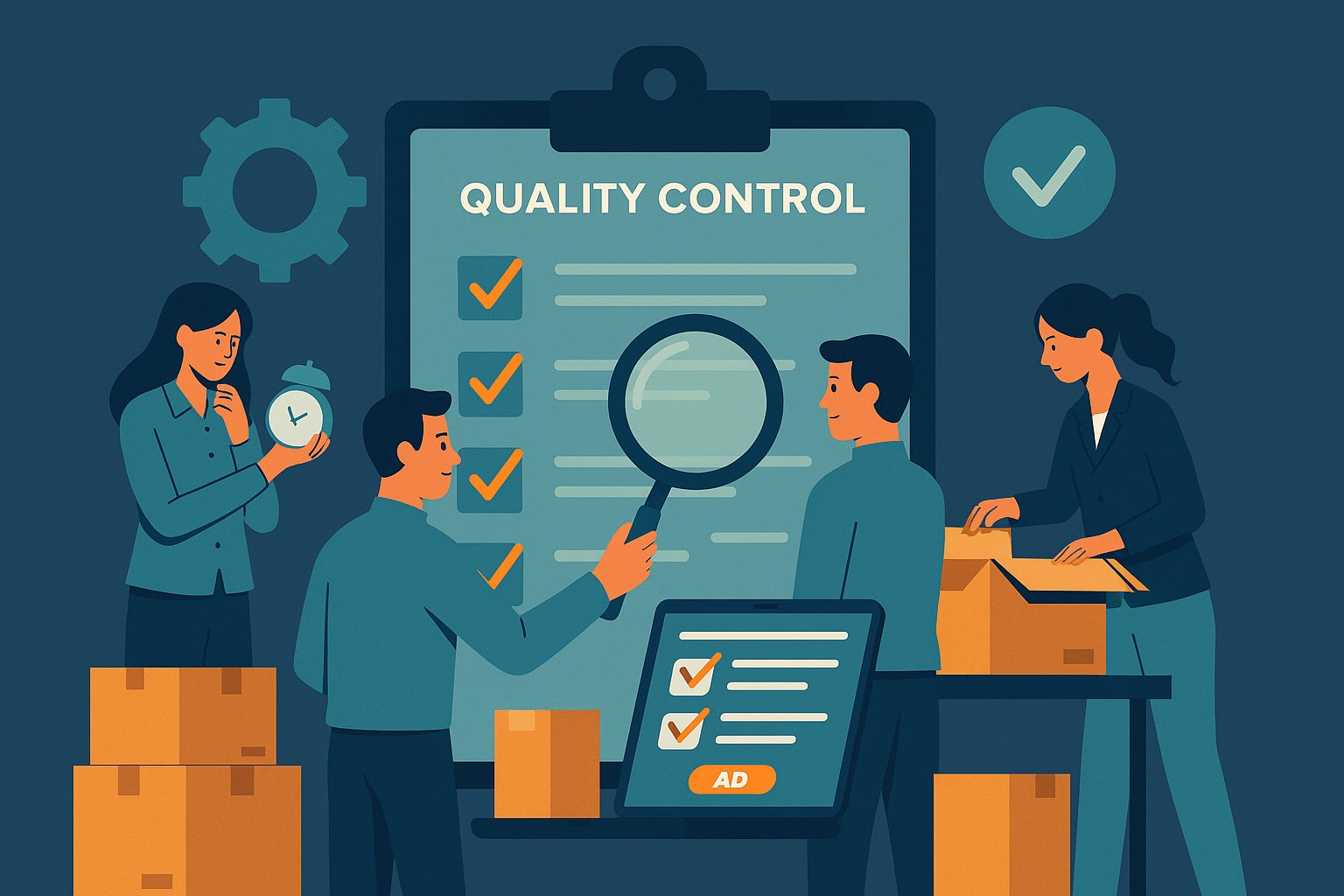When Plans Meet Reality: Embracing the Unexpected
Every crowdfunding journey starts with boundless optimism: a gleaming prototype, an enthusiastic community, and a roadmap to a seamless production and delivery. Yet, in the dynamic world of crowdfunded product development, no matter how meticulously you plan, there’s always a chance that production hiccups will emerge. Perhaps a critical component faces a sudden shortage, or a tooling modification takes longer than expected. A well-crafted strategy for managing production delays transforms these potential pitfalls into moments of opportunity, cementing your reputation for reliability and resilience. In this article, we’ll navigate the art and science of responding to delays without losing backer trust or project momentum.
Tracing the Ripple Effect: How Delays Impact Your Campaign
Production delays are not isolated events; they create a cascade of consequences that touch every facet of your campaign. A postponed assembly timeline can derail shipping schedules, inflate shipping costs, and strain the morale of your team. Simultaneously, backers eagerly awaiting their rewards can feel anxious, leading to a surge of support messages or negative reviews if communication falters. Moreover, media outlets and social influencers who pledged early may lose interest if they perceive your project as faltering. Recognizing these ripple effects is the first step toward mitigating them. By mapping out how a single two-week delay in component delivery affects subsequent milestones—say, pushing a four-week assembly window into a six-week one—you can forecast budget overruns, staffing reallocations, and revised shipping estimates. This holistic perspective empowers creators to respond not only reactively but proactively, ensuring that a hiccup at the factory doesn’t become a full-blown crisis for the entire community.
Decoding Delay Causes: From Supplier Snags to Material Shortages
Identifying the root causes of production delays is like detective work—each clue can point toward a different culprit. At the supplier level, factories may struggle with outdated machinery that breaks down unexpectedly, leading to unplanned maintenance windows. In other cases, raw material shortages can originate from global disruptions in the supply chain, such as natural disasters affecting mining operations or geopolitical tensions halting exports. Even seemingly minor factors—like a late payment, a misfiled order, or a miscommunication about minimum order quantities—can trigger cascading delays. To manage these variables effectively, maintain a running log of all vendor interactions, including date-stamped purchase orders, lead-time estimates, and quality inspection reports. When a delay emerges, refer to this record to pinpoint whether the root cause lies with a specific supplier, a transportation bottleneck, or an internal misalignment. Armed with this context, you can chart a corrective path that directly addresses the underlying issue rather than applying generic fixes.
Building a Flexibility Framework: Proactive Contingency Planning
No project plan is complete without buffer zones—strategically built-in buffers that absorb unexpected setbacks without derailing the entire timeline. Think of these buffers as shock absorbers for your production chassis. For example, when negotiating lead times with your manufacturer, don’t settle for the optimistic “best-case scenario” estimate. Instead, request a range: ask, “What’s the typical lead time during peak production months? How much extra time would you need if the factory hits full capacity?” Incorporate these broader windows into your schedule so that a quoted four-week tooling phase becomes a planned six-week phase with two additional weeks of cushion. Beyond calendar buffers, diversify your supplier network. Identify at least two backup vendors for every critical component—whether it’s a custom circuit board, a specialized fastener, or a proprietary plastic resin. This supplier redundancy ensures that if one factory experiences a shutdown, you can pivot seamlessly to an alternative without undergoing a lengthy qualification process. By embedding contingency plans at each stage—from component sourcing to final assembly—you transform production planning into a resilient framework capable of adapting to surprises.
Real-Time Communication: Keeping Backers in the Loop
A delayed production run can be nerve-racking for the creator, but it can be downright agonizing for backers who have invested both money and faith in your product. The antidote to anxiety is transparency. As soon as a delay becomes evident—whether it’s a two-day shipping hiccup or a two-week tooling rework—draft a candid update for your crowdfunding platform. Explain the cause succinctly, outline the corrective actions underway, and share a revised timeline that includes new buffer zones. Avoid vague phrases like “We’re working on it”; instead, describe specifics: “Our injection-molding partner discovered a warpage issue in the initial sample, so they’ve retooled the mold and expect a fresh prototype in five business days.” If possible, accompany the update with a short photo or video—an image of the new prototype shot on the factory floor or a screenshot of a supplier’s production schedule. When backers feel informed rather than left in the dark, they become more patient advocates rather than anxious critics. In your communication schedule, block out time solely for crafting these updates, responding to backer comments, and monitoring sentiment across social channels. This disciplined approach ensures that transparency remains a cornerstone rather than an afterthought.
Partnering with Manufacturers: Negotiating Revised Schedules
When delays occur, your relationship with your manufacturing partner can be the deciding factor between a minor setback and a full-scale campaign crisis. Rather than adopting an adversarial stance, approach the conversation as a collaborative negotiation. Schedule a video conference or a detailed email exchange where you outline your campaign’s revised needs—whether that’s expediting tooling completion or reshuffling production batches to prioritize partial shipments. Use the data you’ve collected from initial lead-time estimates and pilot runs to advocate for improved delivery schedules. For instance, if your contract guarantees a four-week run but the factory indicates their queue is two weeks longer, negotiate a clause for partial shipping of completed batches at lower per-unit volumes. Many factories are willing to accommodate phased deployments if they see a clear, data-backed rationale and an ongoing partnership potential. Simultaneously, be prepared to offer incentives: a small increase in unit price or committing to a larger volume for future production runs can motivate the factory to prioritize your project. By treating your manufacturer as a strategic ally rather than a vendor, you gain access to creative solutions that minimize disruption.
Adaptive Production: Iterating and Pivoting on the Fly
Sometimes, the solution to a delay is not simply pushing timelines but adapting the product design to eliminate the bottleneck. Suppose your injection-molded plastic shell keep failing QC tests due to a complex undercut feature. Rather than waiting weeks for a re-engineered steel mold, consider modifying the design for a simpler slide-action mechanism that a secondary finishing step can accommodate. This design pivot might temporarily alter your product’s aesthetics, but if communicated properly to backers, it demonstrates agility and dedication to timely delivery. Similarly, if a specialized PCB supplier faces an unexpected raw material shortage, pivot to a standard PCB substrate while maintaining the same circuitry, then source the premium substrate for a subsequent, limited edition run. In your timetable, allocate windows specifically for design-for-manufacturability (DFM) reviews—moments when your engineering team and manufacturing partner review the current design and identify simplification opportunities. Embracing an iterative mindset allows you to pivot on the fly, ensuring that production doesn’t grind to a halt when a single component hits a snag.
Budgeting Buffers: Financial Strategies for Unexpected Costs
Delays often come with a price tag—expedited shipments, additional tooling fees, and extra labor hours can inflate your original budget. A robust financial plan anticipates these potential cost overruns by allocating a contingency fund, typically 15–20% of the total production budget. When you request initial quotes from manufacturers, ask for “rush” rates: determine how much extra you’d need to pay if you expedite a production batch by half the normal lead time. Factor these expedited rates into your contingency fund so that, if a delay threatens to push you into the holiday shipping window, you can cover the additional freight cost without dipping into personal savings. Additionally, negotiate payment milestones that protect your cash flow in case of delays. For example, instead of a 50% down payment and 50% on delivery, consider a structure like 30% down, 40% upon initial sample approval, and 30% upon full-run completion. This milestone-based payment approach reduces your financial exposure if timelines slip or if you need to shift to a backup supplier mid-project. By embedding financial buffers and flexible payment terms into your production agreement, you’re less likely to face a cash crunch if delays arise.
Maintaining Team Momentum: Leadership Amidst Uncertainty
Behind every successful crowdfunding campaign is a dedicated team juggling design, manufacturing, marketing, and customer support. Production delays can dampen morale, causing burnout and stagnation that ripple across all departments. Effective leadership during these periods is critical. Start by convening a daily or bi-weekly “status huddle” where each team member briefly outlines progress, challenges, and required resources. These meetings, limited to 15 minutes, foster collective problem-solving and prevent silos from forming. Encourage team members to voice concerns about stretched timelines or resource constraints, then collaborate on pragmatic adjustments. If the design team is idled because tooling is delayed, redirect them to work on next-phase assets such as marketing collateral, instructional videos, or post-launch feature enhancements. By reallocating resources rather than leaving staff idle, you maintain momentum, stimulate creativity, and ensure that every minute spent reflects forward progress toward campaign objectives. Recognize individual contributions publicly, celebrating small wins—like a successful QC test or a logistic vendor’s on-time delivery—to keep morale high during challenging periods.
Harvesting Lessons: Turning Setbacks into Future Strengths
Once your delayed production finally clears the finish line and backers receive their rewards, the journey isn’t over—it’s time for reflection and continuous improvement. Conduct a comprehensive post-campaign retrospective that examines every phase of your production pipeline: design, prototyping, supplier selection, tooling, QC audits, and communication. Use performance metrics—such as days of delay per production stage, percentage of defects, or number of backer inquiries—to quantify where the process deviated from projections. Externalize these insights into a “Lessons Learned” document, capturing not just the challenges but the creative solutions that salvaged the timeline. For instance, if moving to a dual-sourcing strategy for critical components reduced subsequent bottlenecks, codify that approach for future projects. Share your retrospective insights with your backer community, not as an apology, but as an empowering narrative that highlights your commitment to transparency and growth. In this way, you transform production delays from embarrassing setbacks into case studies of innovation, resilience, and relentless pursuit of excellence.
Sustaining Backer Trust: The Power of Genuine Accountability
In crowdfunding, reputation is both fragile and priceless. A single campaign plagued by unresolved delays can cast a long shadow over future fundraising endeavors. To preserve backer trust, craft a final “Campaign Closure” update that summarizes the delayed milestones, acknowledges where you fell short, and celebrates the collective success of reaching the finish line. Use this moment to reaffirm your commitment to quality, explaining how the solutions you implemented—whether a design pivot or a supplier shift—ultimately resulted in a better product. Offer a heartfelt thank-you to the backer community for their patience and support, perhaps accompanied by a small token of appreciation such as a limited-edition accessory or early access to future innovations. By owning the narrative and demonstrating genuine accountability, you transform skeptics into lifelong advocates. When backers see that you’ve navigated turmoil with honesty and determination, they are more likely to back your next venture, confident that their investment funds a team that values transparency above all else.
Charting a Brighter Path Forward with Confidence
Managing production delays in a crowdfunded product development journey demands a blend of strategic planning, nimble execution, and heartfelt communication. By tracing the ripple effects of setbacks, decoding root causes, and embedding robust contingency frameworks, you transform challenges into catalysts for stronger processes. Real-time updates preserve backer trust, while adaptive production techniques ensure you never lose pace when conditions change. Financial buffers safeguard against budgetary surprises, and empathetic leadership keeps your team energized during turbulent phases. Finally, conducting a candid post-mortem harvests invaluable lessons, positioning you as a creator who not only delivers innovative products but also navigates adversity with grace and grit. Armed with these insights, your next crowdfunded campaign won’t just withstand delays—it will emerge from them stronger, more respected, and primed for long-term success.




